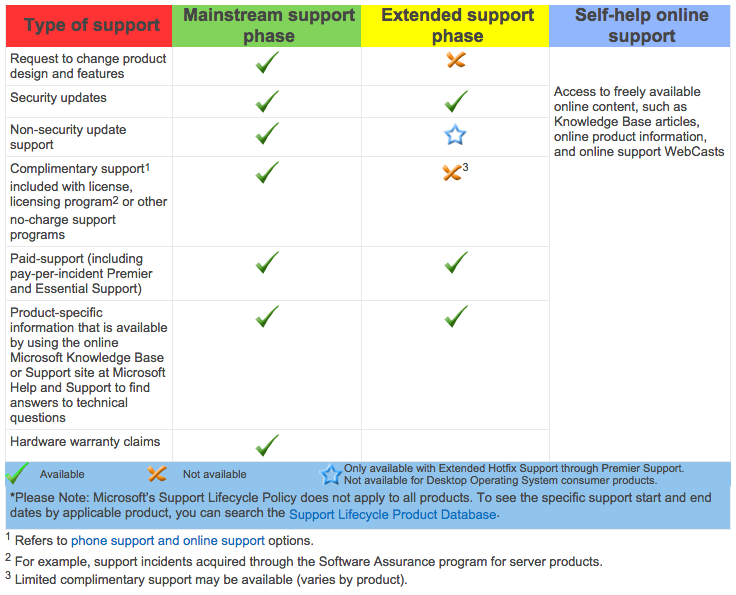Windows 10 has been the topic of discussion for quite some time with anticipation building for the official launch of the new operating system. From the looks of the preview demos, this is going to be a great upgrade for business and personal users alike.
Set to launch later this year Windows 10 is said to be a free upgrade to existing Windows users. So if you have Windows 7, 8, 8.1, and even Windows Phone, you’re in luck. Since the OS is getting a major overhaul, here’s a break down of the top ten Windows 10 features to look forward to.
New Web Browser
The days of Microsoft’s Internet Explorer are limited. Windows 10 will be launching a brand new default web browser: Project Spartan. With this browser Microsoft has focused on user experience by streamlining the appearance across different devices which is something Internet Explorer has struggled with. Other things to look forward to in Project Spartan include: an offline-capable reading list similar to Apple’s, PDF support, and Cortana integration.
Return of the Start Menu
Microsoft is bringing back the traditional Start Menu with a twist. They old search functions are back making it easier to navigate your PC. But it’s been updated by and additional area of live tiles that can be personalized so you see the information that is important to you.
Continuum
Do you have a 2-in-1 computer? Continuum is a new feature that helps you switch back and forth smoothly between tablet and PC mode. When you detach the keyboard from the screen, you’ll be prompted to enter tablet-mode which is designed to be touch based. Continuum automatically senses if a keyboard and mouse are connected and displays prompts automatically.
Cortana for the Desktop
Microsoft’s digital voice assistant, Cortana, is coming to PCs with the launch of Windows 10. Microsoft is taking the features from mobile and integrating them into the PC for a seamless user experience with Cortana. Launch your favorite apps, listen to your music library, set reminders and alarms, call your contacts, and of course ask everyday questions. Cortana pulls answers from Bing along with data from your computer’s hard drive or One Drive account.
Improved Multitasking
Task view button allows you to see all of your open windows at once and switch between them, making multi tasking a piece of cake. They have also updated the snap assist feature. You can view up to four applications on the same screen. Snap Assist has also gotten smarter. It will intuitively suggest apps that work well together and you often use at the same time.

Multiple Desktops
You are no longer limited to one desktop. Microsoft is adding virtual desktops to Windows 10. You can create multiple desktops that you can switch between depending on what you are doing. Each desktop has another set of windows as if you are on a different screen. You can had a desktop designated for personal use and switch over to a virtual desktop that is specifically set up for business tasks.

Notification Center
Notifications got a makeover in Windows 10. Instead of a small notification in the lower right-had corner that is often overlooked, notifications now appear larger in the upper right corner of the desktop, similar to Apple’s OS X.
Universal Apps
Microsoft will be introducing new apps that are, you guessed it, universal. These apps will be integrated into all devices, giving the user a seamless experience when switching between phone, PC, and tablet. The apps include Photos, Videos, Maps, People & Messaging, and Mail & Calendar. Information on these apps are stored in One Drive and can be accessed from any of your devices. Get someone’s contact information on your cell phone and be able to send them an email from your PC in a matter of seconds.
Office Suite
Not only are the apps getting updated, the Microsoft Office apps are getting revamped as well. Word, Excel, PowerPoint, and Outlook will all be touch based interface that will work on all of your devices.
Command Prompts
Keyboard shortcuts for everyone! Windows 10 is the first operating system in a long time that allows users to personalize Command Prompt. Although this may be a little complex to set up, if done correctly Command Prompt allows you to set up keyboard shortcuts that you can use on your computer.
It seems like we have a lot to look forward to with the release of Windows 10, which is expected to come out later this year. In the meantime, Microsoft is still developing the operating system so there may be more surprises in store before Windows 10 hits the consumer market. What do you think about the new features in Windows 10?



 Flex Technology Group was recently notified by Hewlett-Packard that some of their HP and Compaq notebook and mini notebook power cables have been the subject of a recall. We wanted to inform all our customers and social media followers about this important situation.
Flex Technology Group was recently notified by Hewlett-Packard that some of their HP and Compaq notebook and mini notebook power cables have been the subject of a recall. We wanted to inform all our customers and social media followers about this important situation.
 What is Cell Phone Unlocking?
What is Cell Phone Unlocking?




